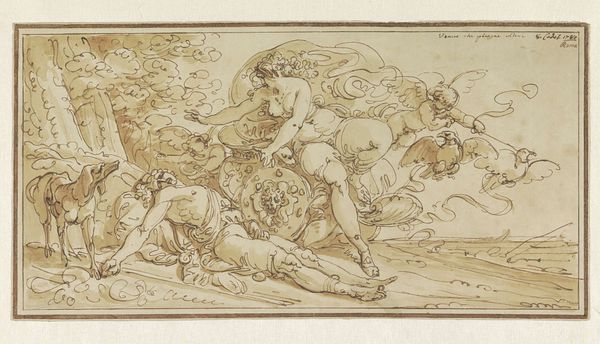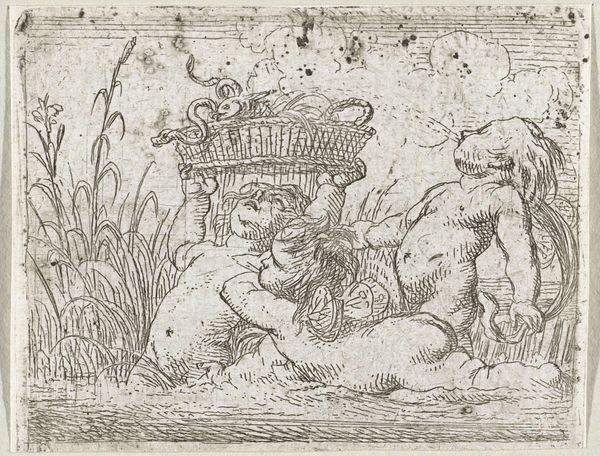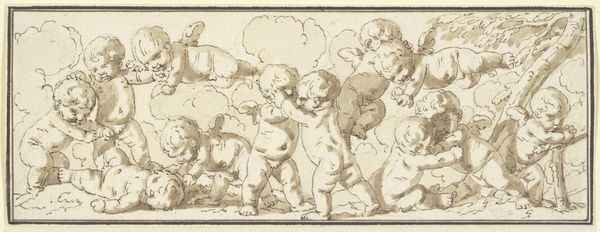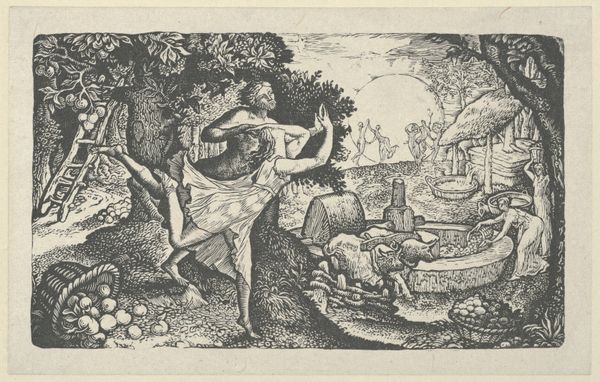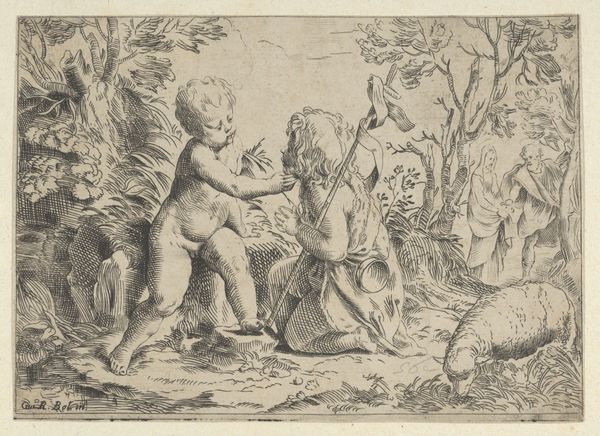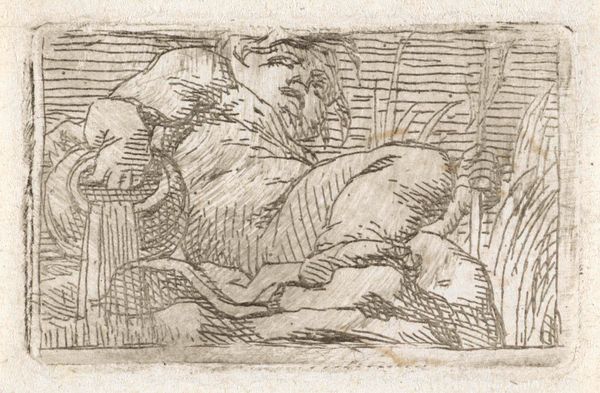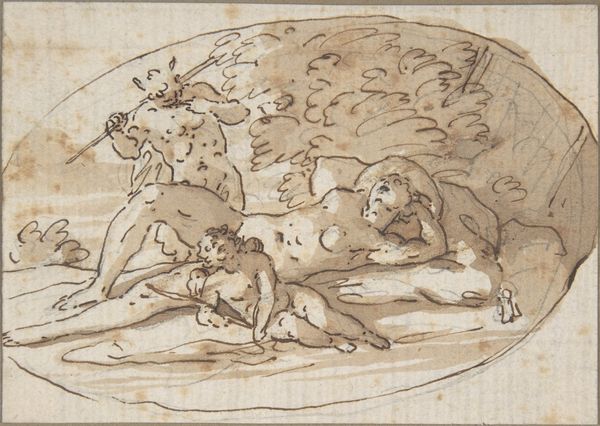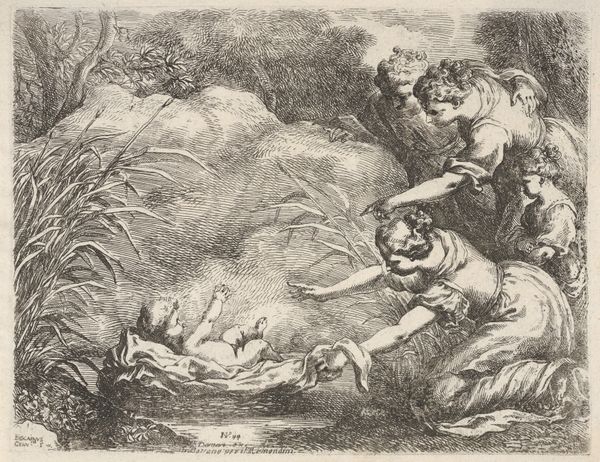
Dimensions: 4 x 8-7/16 in
Copyright: Public Domain
This anonymous drawing titled “Frieze with Putti” is rendered in pen and brown ink with gray wash and white heightening on gray prepared paper. During the Renaissance, the image of putti, or cherubic children, became a popular motif, often adorning architectural friezes and paintings. They were used to convey themes of innocence, love, and divine presence. What strikes me here is the way that these figures, while seemingly innocent, carry complex social and historical meanings. Historically, the imagery of putti can be interpreted as a reflection of cultural attitudes toward children and childhood. While ostensibly celebrating innocence, it is critical to acknowledge that in many historical contexts, the reality of childhood involved exploitation and limited agency. The drawing invites us to reflect on the varied experiences of childhood.
Comments
No comments
Be the first to comment and join the conversation on the ultimate creative platform.



